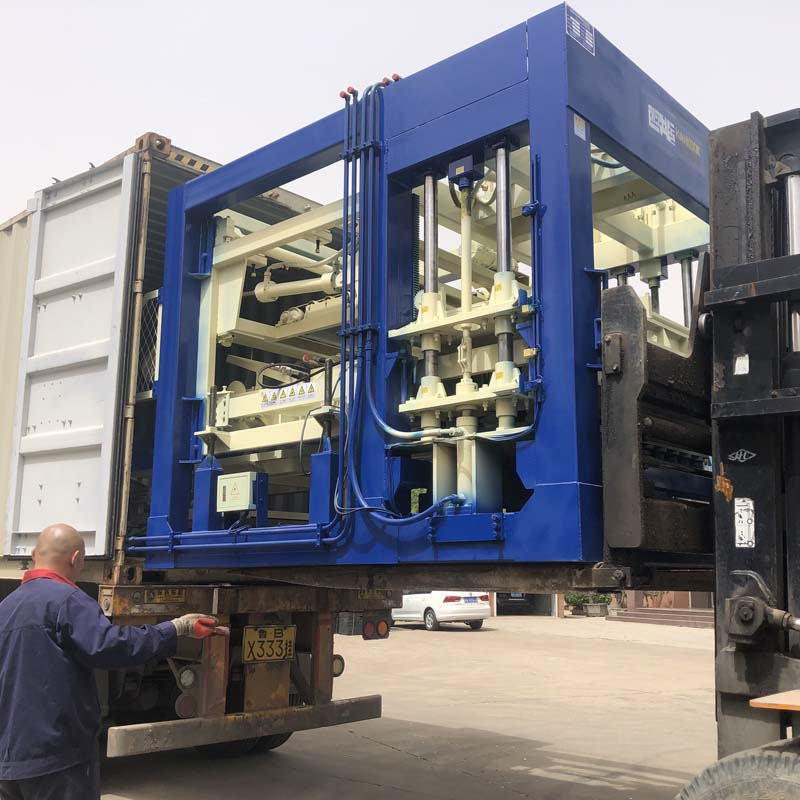
Title: Energy Efficiency Measures in Block Manufacturing
Introduction:
In the modern industrial landscape, the pursuit of sustainability and energy efficiency is not just a trend but a necessity. Block manufacturing, a significant sector within the construction industry, is no exception. The energy-intensive nature of the manufacturing process demands a strategic approach to reduce environmental impact and operational costs. This article explores key energy efficiency measures in block manufacturing, examining technological advancements, process optimization, and sustainable practices that contribute to a more eco-friendly and economically viable production process.
- Understanding the Energy Challenges in Block Manufacturing:Block manufacturing involves several energy-intensive processes, from raw material extraction and preparation to curing and drying of the finished blocks. The energy challenges in this sector stem from the use of fossil fuels, electricity consumption, and the need for consistent high temperatures during manufacturing.
- Cement Production: The production of cement, a key component in block manufacturing, is energy-intensive and contributes significantly to carbon emissions. Finding alternatives and optimizing the use of cement are crucial for reducing the environmental impact.
- Material Preparation and Mixing: Crushing and grinding raw materials, as well as the mixing process, require substantial energy inputs. Optimizing these processes can contribute to overall energy efficiency.
- Curing and Drying: The curing and drying stages involve the application of heat, often generated through the combustion of fossil fuels. Exploring alternative heating methods and optimizing energy use during these stages are essential for sustainability.
- Technological Advancements for Energy Efficiency:
- High-Efficiency Machinery: Investing in high-efficiency machinery can significantly reduce energy consumption during the manufacturing process. Modern equipment often incorporates advanced technologies that enhance performance while minimizing energy requirements.
- Automated Systems and Controls: Implementing automated systems and controls can optimize energy use by ensuring precise control over manufacturing parameters. This includes automated batching systems, temperature controls, and process monitoring.
- Energy-Efficient Kilns: Kilns play a crucial role in the curing and drying of blocks. The use of energy-efficient kilns, such as those designed with improved insulation and combustion systems, can enhance overall energy efficiency.
- Renewable Energy Integration: Embracing renewable energy sources, such as solar or wind power, for electricity generation can significantly reduce the carbon footprint of block manufacturing operations. The integration of on-site renewable energy systems is a sustainable approach.
- Process Optimization for Energy Efficiency:
- Cement Alternatives and Blending: Exploring alternatives to traditional Portland cement, such as fly ash, slag, or pozzolans, can reduce the environmental impact of cement production. Blending cement with supplementary materials is a common practice to enhance sustainability.
- Material Efficiency: Optimizing the use of raw materials and incorporating recycled content in block production can contribute to energy efficiency. Utilizing recycled aggregates and industrial by-products as supplementary materials minimizes the energy required for extraction and processing.
- Heat Recovery Systems: Implementing heat recovery systems can capture and reuse excess heat generated during the manufacturing process. This not only improves energy efficiency but also reduces the overall demand for energy inputs.
- Optimized Curing Processes: Curing blocks efficiently is crucial for achieving the desired strength. Implementing optimized curing processes, such as autoclaving or steam curing, can reduce the time and energy required for curing.
- Sustainable Practices for Energy Efficiency:
- Waste Heat Utilization: Explore opportunities to utilize waste heat from various manufacturing processes. This can involve capturing heat from kilns or exhaust gases and repurposing it for other stages in the manufacturing process.
- Energy-Efficient Lighting and HVAC Systems: Beyond the manufacturing process, optimizing energy use in lighting, heating, ventilation, and air conditioning (HVAC) systems within the facility contributes to overall energy efficiency.
- Employee Training: Training employees on energy-saving practices and the importance of sustainability fosters a culture of awareness and responsibility. Simple measures, such as turning off equipment when not in use, can collectively lead to significant energy savings.
- Energy Audits and Monitoring: Conducting regular energy audits and monitoring energy consumption patterns help identify areas for improvement. Real-time monitoring allows for prompt intervention and adjustments to optimize energy use.
- Certifications and Standards for Energy Efficiency:
- LEED Certification: Pursuing Leadership in Energy and Environmental Design (LEED) certification for block manufacturing facilities demonstrates a commitment to sustainability. LEED considers energy efficiency, water conservation, and other environmentally friendly practices.
- ISO 50001: Implementing the ISO 50001 Energy Management System standard provides a framework for systematic energy management. This standard helps organizations establish energy policies, set energy objectives, and implement action plans for continual improvement.
- Energy Star Certification: Energy Star certification, widely recognized in the building industry, focuses on energy efficiency. This certification covers various aspects, including manufacturing processes and energy-efficient equipment.
- Case Study: Successful Implementation of Energy Efficiency Measures:Consider a case study where a block manufacturing plant successfully implemented a comprehensive energy efficiency strategy. By investing in high-efficiency machinery, integrating renewable energy sources, and optimizing manufacturing processes, the plant achieved a substantial reduction in energy consumption. This not only contributed to cost savings but also enhanced the company’s reputation as an environmentally conscious and sustainable manufacturer.
- Conclusion:Energy efficiency in block manufacturing is not only a pathway to cost savings but a fundamental responsibility in the pursuit of sustainable industrial practices. By adopting technological advancements, optimizing manufacturing processes, and embracing sustainable practices, block manufacturing plants can significantly reduce their environmental impact. In an era where environmental considerations play a crucial role in business success, investing in energy efficiency measures is not just a choice but a strategic imperative for the long-term viability and competitiveness of the industry.
